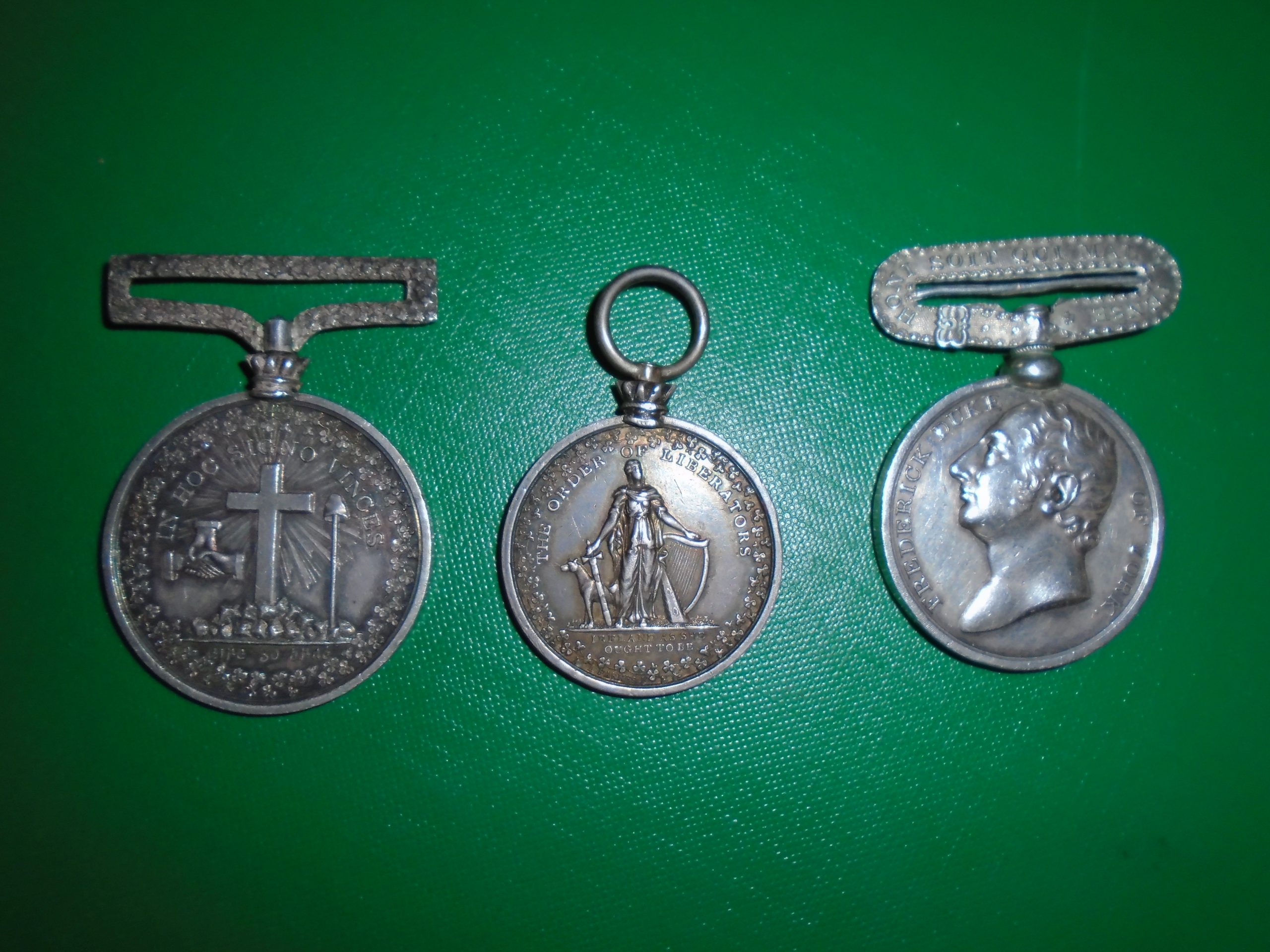The Order of Liberators
Published in Artefacts, Issue 4 (July/August 2020), Volume 28BY DECLAN BARRON

Above: Two medals by Isaac Parkes. The first two images are the front and back of an Order of Liberators medal, while the third, featuring Frederick, Duke of York, and which may have inspired the former, is from the anti-Catholic Emancipation Royal York Club.
Ireland in the 1820s was divided on the question of religious liberty. In 1825 the Protestant establishment in Dublin formed the Royal York Club to conserve the status quo and prevent Catholic Emancipation. The following year Daniel O’Connell formed the Order of Liberators to honour supporters for standing up for Catholic rights, as well as to discourage them from joining secret or illegal groups.
When the Royal York Club was formed, each member was issued with a silver medal, made by medallist Isaac Parkes, which had the head of Frederick, Duke of York, on one side and on the other side words from an anti-Emancipation speech that he had given in the House of Lords. It is possible that the York Club medal was the inspiration for O’Connell’s Order of Liberators medal.
The Order had three grades; the top grade, a Knight Companion, was bestowed on a member who had on two occasions been of real service to Ireland. On 31 August 1826 the first inaugurations took place. The Order of Liberators medal was designed by George Francis Mulvany (1809–69). It was to have been struck by William Mossop in July 1826, but as Mossop was unwell another medallist was sought. Two medallists were then used—Isaac Parkes (ironically) and William Woodhouse. In September 1826 the Waterford Mail wrote that:
‘The medal in the ordinary of the Order of Liberators is composed of Britannia metal, and is about the size of a half crown piece, having a ring attached to it to be suspended by the wearer. On the obverse we have Hibernia with her harp, a sword in her hand (pointed downwards) and her hound by her side; “The Order of Liberators” above—“Ireland as she ought to be” beneath. The shamrock encircles the whole. On the reverse is a Cross with rays; on the right of which are three hands joined, and on the left the tree and cap of liberty. Above and beneath the cross, are the mottos, “In Hoc Signo Vinces”, and “Erin [sic] go bragh”; the whole is encircled with a wreath of shamrocks.’
In October 1826 Parkes was having trouble with the assay master in getting silver medals hallmarked, so he produced cheaper medals of a composition of brass and silver. Frazer’s ‘The medallists of Ireland and their work’ records a bronze gilt medal of 1.6 inches and a smaller lead medal of 1.4 inches.
In an article in the North Munster Antiquarian Journal 10 (1966), Padraig Ó Snodaigh lists the rules and regulations of the Order. He also tells us that at that time the National Museum of Ireland had three Woodhouse medals and four Parkes medals. He says that there were two sizes (1.5 inches and 1.3 inches) and three types of metal used (silver, bronze and white metal). At that time the Museum had only one medal with a suspension for a ribbon (i.e. a silver Woodhouse medal).
In recent years more medals have appeared. It is now known—with the possible exception of the bronze medals—that each medal had a grip suspender in the shape of an Eastern Crown. Attached to this were two types of medal suspension—Parkes made silver medals of 1.4 inches with a swivel loop and both Parkes and Woodhouse made silver medals of 1.6 inches with a silver pin clasp ribbon holder (in the same style that Parkes used for the York Club medal). We also now know that the lead versions of the smaller size could also be suspended from a ribbon.
The Order was dissolved in 1835.
Declan Barron has an MA in Local History from the University of Limerick.
















